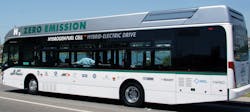Bridge tolls help ease East Bay commuters’ parking crunch
New commuter parking projects for Alameda County Transportation received $9.3 million in funding after the Metropolitan Transportation Commission allocated Regional Measure 2 toll dollars to advance the projects.
The construction of a parking garage near Dublin/Pleasanton BART station will receive $7 million while a trio of commuter parking lots at Oakland and Albany locations served by AC Transit’s transbay buses will receive $2.3 million through MTC’s Bay Bridge Forward initiative.
“This a great way to improve the quality of life for a lot of commuters who don’t live within walking distance of a BART station or bus stop,” said MTC Chair and Alameda County Supervisor Scott Haggerty. “Among the ways to reduce congestion on East Bay freeways is to make it more convenient for people to ride transit; and one of the best ways to improve convenience is to solve the chronic parking shortages at so many of our key transit stops.”
The $34 million, 537-space parking garage near the Dublin/Pleasanton BART station will be built adjacent to the existing BART garage at the station, which contains nearly 3,000 spaces. The $7 million commitment from MTC supplements $20 million in state funds awarded to the Livermore-Amador Valley Transit Authority for the project through the Transit and Intercity Rail Capital Program plus another $7 million in vehicle registration fee money contributed by the Alameda County Transportation Commission. Construction on the new garage is expected to begin next spring, with the opening scheduled for mid-2021.
The three commuter parking lots now under construction in the East Bay are scheduled to open by the end of this year. These include two lots beneath Interstate 880 at High Street and Fruitvale Avenue in Oakland, and a third lot adjacent to Interstate 80 at Buchanan Street in Albany.
Regional Measure 2, which was approved by Bay Area voters in 2004, raised tolls by $1 on each of the region’s seven state-owned toll bridges to finance a range of highway and transit improvements in the bridge corridors and along their approaches, as well as to provide operating support for transit services in the bridge corridors.
